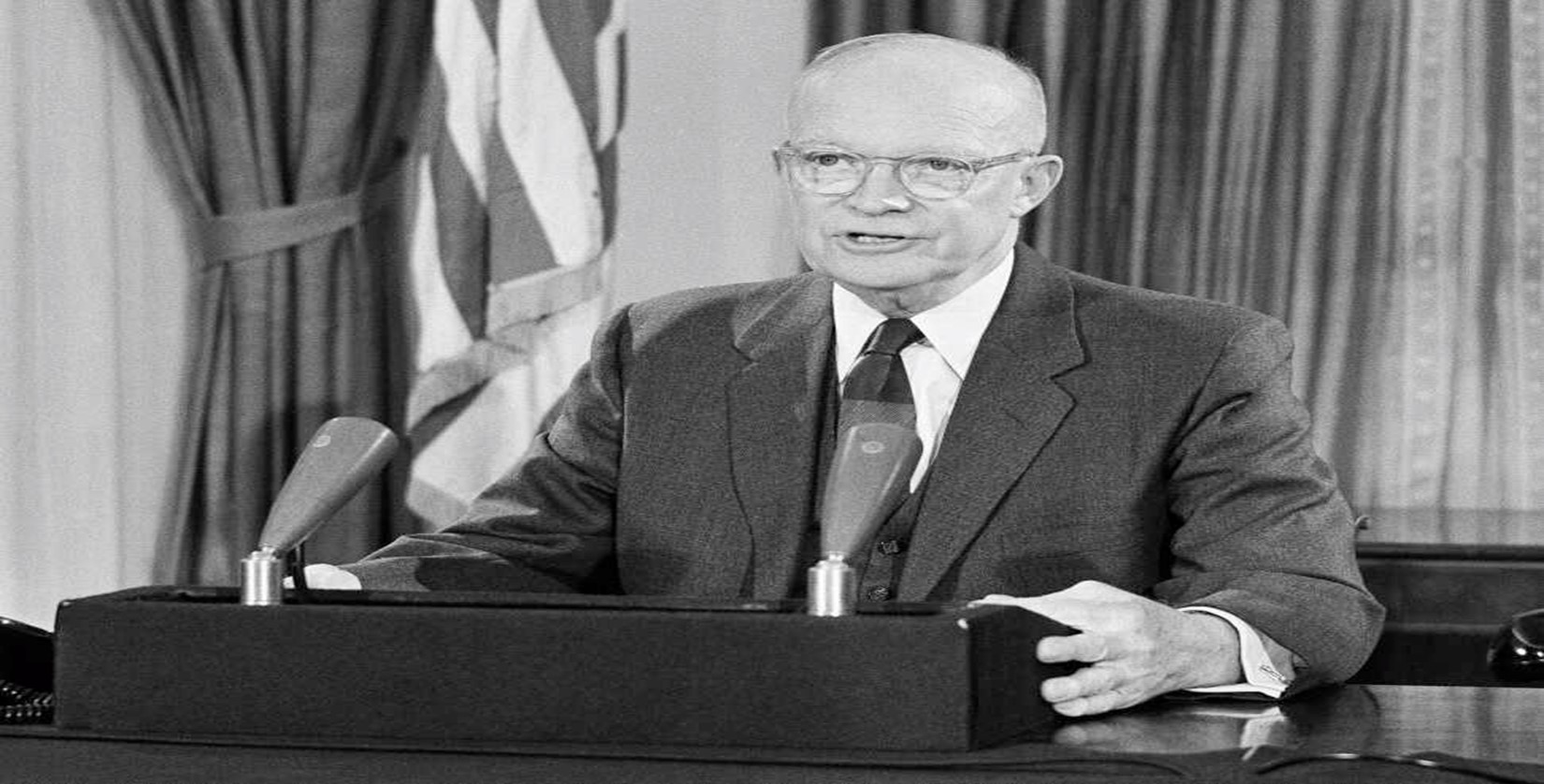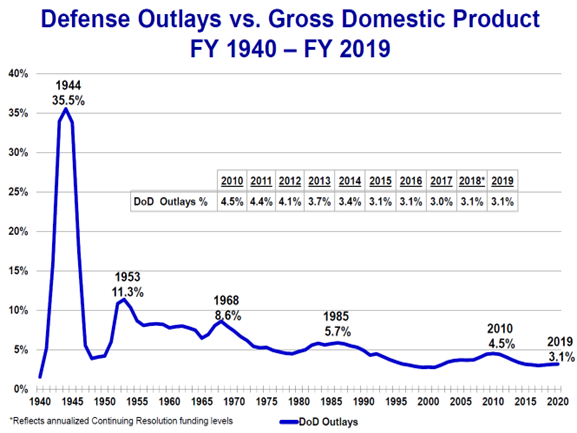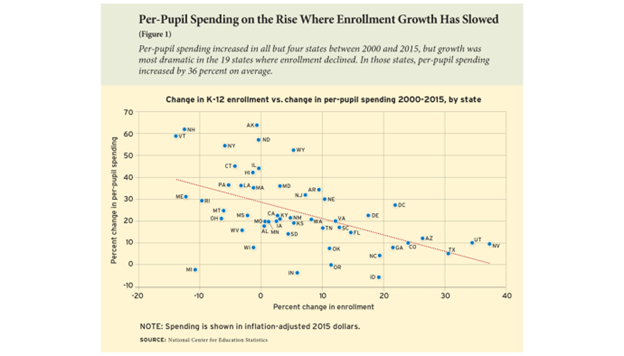
On Jan.17, 1961, President Dwight D. Eisenhower delivered a 10-minute farewell address after having served his nation as president. He had interesting things to say, such as:
As we peer into society’s future, we – you and I, and our government – must avoid the impulse to live only for today, plundering for our own ease and convenience the precious resources of tomorrow. We cannot mortgage the material assets of our grandchildren without risking the loss also of their political and spiritual heritage. We want democracy to survive for all generations to come, not to become the insolvent phantom of tomorrow.
How is the whole not plundering the precious resources of tomorrow thing going for us? Not well lately (red arrow designates the end of the Eisenhower administration).

In this same address, Eisenhower famously warned us about the “Military Industrial Complex.” Having served as supreme commander of Allied Forces in Europe during World War II in addition
to the nation’s 34th president, Eisenhower’s warning received and continues to receive grave consideration:
This conjunction of an immense military establishment and a large arms industry is new in the American experience. . .Yet we must not fail to comprehend its grave implications. . . In the councils of government, we must guard against the acquisition of unwarranted influence, whether sought or unsought, by the military-industrial complex. The potential for the disastrous rise of misplaced power exists and will persist.

Luckily, military spending did not spiral out of control. American military spending as a percentage of GDP declined over time. The United States won the Cold War, managed to successfully close a huge number of unnecessary military bases (not the sort of thing an overly powerful Military Industrial Complex would like to see). The United States may have had a “Military Industrial Complex” problem to manage, but it managed it successfully.
We’ve yet to successfully manage our school District Lobbying Complex.
Part of the challenge of the Military Industrial Complex was that defense contractors (quite deliberately) spread facilities widely across congressional districts. Military bases likewise were ubiquitous. The Phoenix area for instance once hosted two Air Force bases, with another less than a couple of hours drive away in Tucson. Austin and San Antonio, Texas, each had Air Force bases. Obviously once the world went all Red Dawn and we lost the bases in Tucson and San Antonio, our forces would regroup in Phoenix and Austin or…something (?)
Such things may not have made a lot of sense from a national security standpoint, but they were great from the standpoint of politics. School districts likewise have amassed an abundance of underused facilities. Keeping them around makes little utilitarian sense, but the District Lobbying Complex is not eager to give them up for political reasons.

In recent decades the states with declining or slow K-12 enrollment growth have had the largest increases in per pupil spending. That has been quite a feat for what we can only half-jokingly call the District Lobbying Complex, but it seems unlikely to be sustained. Like the Military Industrial Complex, the district system is spread far and wide across the country, and the education unions have been ranked as among the most powerful state level special interest group.
The federal government provides about 35% of the average state’s budget and has tested the outer limits of fiscal insanity with a determined vigor (see first chart above). How long they will be able to keep this up remains unknown but put me down for “less than forever.”
Like the Military Industrial Complex, the District Lobbying Complex may prove to have already peaked. The period in which states could turn up the per pupil spending knob despite declining enrollments coincided with and was enabled by America’s massive Baby Boom generation being in their prime earning years. The average Baby Boomer turned 65 in 2022. Any guesses on where their spending priorities will lie in a competition between their health care and retirement programs and K-12? American families, in increasing numbers, are hitting the exits for districts in search of better opportunities. And then there is the baby bust that began decades ago to consider.
The rise of district employee unions certainly squared with Eisenhower’s “disastrous rise of misplaced power.” This power, however, has gone into an inexorable decline.


